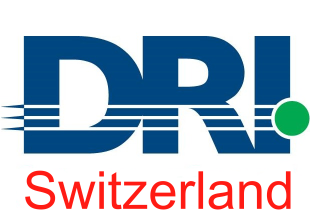Other cookies are configurable.
Professional Practices
The Professional Practices for Business Continuity Management
Introduction
Business Continuity Management (BCM) is a management process that identifies risk, threats and vulnerabilities that could impact an entity’s continued operations and provides a framework for building organizational resilience and the capability for an effective response. The objective of Business Continuity Management is to make the entity more resilient to potential threats and allow the entity to resume or continue operations under adverse or abnormal conditions. This is accomplished by the introduction of appropriate resilience strategies to reduce the likelihood and impact of a threat, and the development of plans to respond and recover from threats that cannot be controlled or mitigated.
The Professional Practices are a body of knowledge designed to assist the entity in the development and implementation of a BCM program. Use of the Professional Practice framework can increase the likelihood that no significant gaps will be present in your program as well as increase the likelihood that the various parts of the program will work cohesively in an actual event.
The sections within these practices are not presented in any particular order of importance, as it may be necessary to undertake or implement sections in parallel during the development of the BCM Program.
Subject area overview
PP1. Program Initiation and Management
Establish the need for a Business Continuity Management Program within the entity, and identify the program components from understanding the entity’s risks and vulnerabilities through development of resilience strategies and response, restoration and recovery plans. The objectives of this professional practice are to obtain the entity’s support and funding, and to build the organizational framework to develop the BCM Program.
PP2. Risk Evaluation and Control
The objective of this professional practice is to identify the risks/threats and vulnerabilities that are both inherent and acquired, which can adversely affect the entity and its resources, or impact the entity’s image. Once identified, threats and vulnerabilities will be assessed as to the likelihood that they would occur and the potential level of impact that would result. The entity can then focus on high probability and high impact events to identify where controls, mitigation or management processes are non-existent, weak and ineffective. This evaluation results in recommendations from the BCM Program for additional controls, mitigations or processes to be implemented to increase the entity’s resiliency from the most commonly occurring and /or highest impact events.
PP3. Business Impact Analysis (BIA)
During the activities of this professional practice, the entity identifies the likely and potential impacts from events on the entity or its processes and the criteria that will be used to quantify and qualify such impacts. The criteria to measure and assess the financial, customer, regulatory and/or reputation impacts must be defined and accepted and then used consistently throughout the entity to define the Recovery Time Objective and Recovery Point Objective for each of the entity’s processes. The result of this analysis is to identify time sensitive processes and the requirements to recover them in the time frame that is acceptable to the entity.
PP4. Business Continuity Strategies
The data that was collected during the BIA and Risk Evaluation is used in this professional practice to identify available continuity and recovery strategies for the entity’s operations and technology. Recommended strategies must be approved and funded and must meet both the Recovery Time and Recovery Point Objectives identified in the BIA. A cost benefit analysis is performed on the recommended strategies to align the cost of implementing the strategy against the assets at risk.
PP5. Emergency Response and Operations
This professional practice defines the requirements to develop and implement the entity’s plan for response to emergency situations that may impact safety of the entity’s employees, visitors or other assets. The emergency response plan documents how the entity will respond to emergency situations until the arrival of trained or external first responders.
PP6. Plan Implementation and Documentation
The Business Continuity Plan is a set of documented processes and procedures which will enable the entity to continue or recover time sensitive processes to the minimum acceptable level within the timeframe acceptable to the entity. In this phase of the Business Continuity Management Program, the relevant teams design, develop, and implement the continuity strategies approved by the entity and document the recovery plans to be used in response to an incident or event.
PP7. Awareness and Training Programs
In this professional practice, a program is developed and implemented to establish and maintain corporate awareness about Business Continuity Management, and to train the entity’s staff so that they are prepared to respond during an event.
PP8. Business Continuity Plan Exercise, Audit and Maintenance
The goal of this professional practice is to establish an exercise, testing, maintenance and audit program. To continue to be effective, a BCM Program must implement a regular exercise schedule to establish confidence in a predictable and repeatable performance of recovery activities throughout the organization. As part of the change management program, the tracking and documentation of these activities provides an evaluation of the on-going state of readiness and allows for continuous improvement of recovery capabilities and ensures that plans remain current and relevant. Establishing an audit process will validate the plans are complete, accurate and in compliance with organizational goals and industry standards as appropriate.
PP9. Crisis Communications
This professional practice provides the framework to identify, develop, communicate and exercise a crisis communication plan. A Crisis Communications Plan addresses the need for effective and timely communication between the entity and all the stakeholders impacted or involved during the response and recovery efforts.
PP10. Coordination with External Agencies
This professional practice defines the need to establish policies and procedures to coordinate response, continuity and recovery activities with external agencies at the local, regional and national levels while ensuring compliance with applicable statutes and regulations.
Click here and log in to MyDRI Account to download the Professional Practices.
